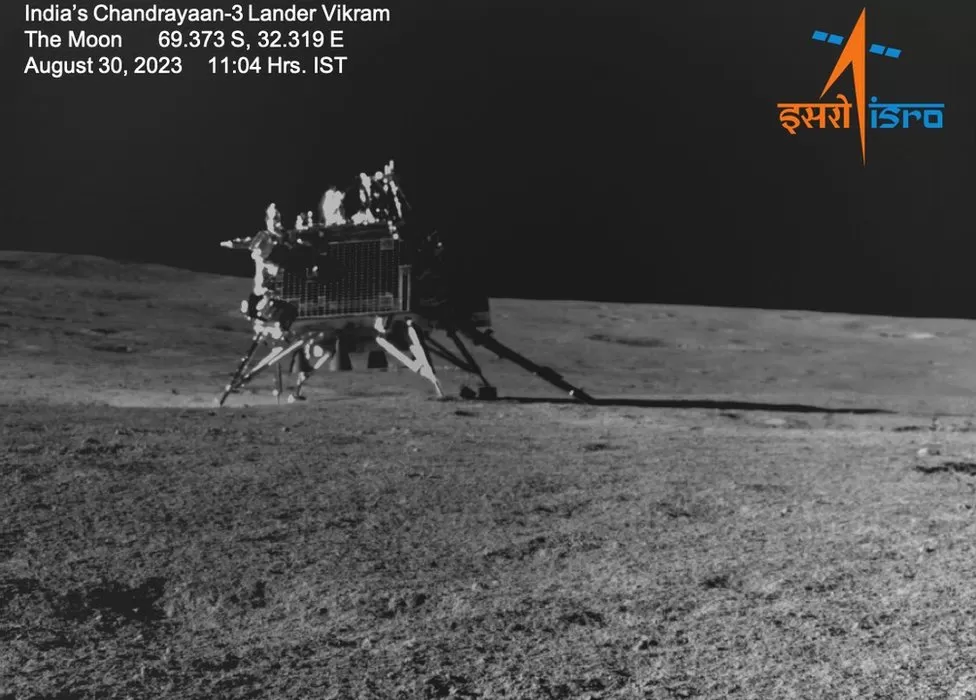What has India’s Moon rover Pragyaan been up to since landing?

Millions of people around the world watched Chandrayaan-3’s Vikram lander touch down on lunar soil after a 20-minute, nail-biting finale.
After taking its first steps on the Moon, the Pragyaan rover – Pragyaan is the Sanskrit word for wisdom – exited the Lunar Lander.
It provides regular updates on the rover’s findings, the photos it is taking, the distance it is covering, and how it is navigating obstacles.
Here are some highlights from the first week of the rover’s Moonwalk: Until now, we had only seen pictures and videos taken by the lander of the rover.
But on Wednesday morning, Pragyaan asked its parent, the Vikram lander, to smile!
Vikram is shown in black-and-white with all four of its legs firmly planted on the lunar surface.
The Indian Space Research Organisation (Isro) said this “image of the mission” was taken by the navigation camera onboard the rover. Over the past few days, the rover has been hard at work.
It announced Tuesday evening that a laser detector onboard made “the first in-situ measurements of the elemental composition of the lunar surface near the south pole” and discovered a number of chemicals, including sulphur and oxygen.
According to the report, the instrument “unambiguously confirms” that sulphur exists, adding that preliminary analysis revealed the presence of aluminium, calcium, iron, chromium, titanium, manganese, silicon, and oxygen as well.
There is a thorough investigation underway regarding the presence of hydrogen, according to the report.
It has been known since the 1970s that lunar soil contains sulphur, according to Nasa project scientist Noah Petro.
In any case, he described Pragyaan’s findings as “a tremendous achievement”.
According to Isro, since it’s in-situ, it’s very important to measure sulphur on the lunar surface. Sulphur is a volatile element when it’s not enclosed in a mineral.
